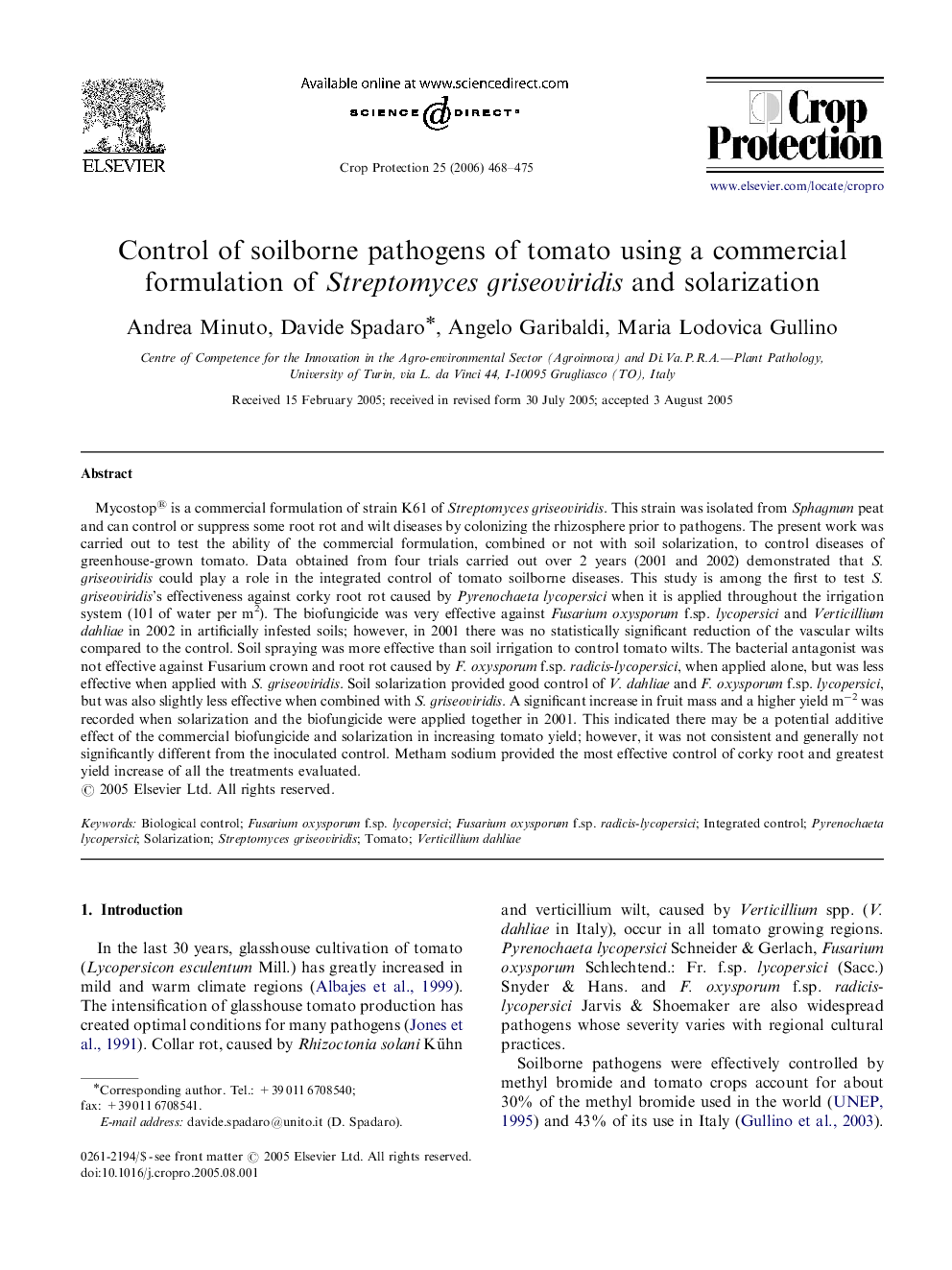| کد مقاله | کد نشریه | سال انتشار | مقاله انگلیسی | نسخه تمام متن |
|---|---|---|---|---|
| 4507326 | 1321350 | 2006 | 8 صفحه PDF | دانلود رایگان |

Mycostop® is a commercial formulation of strain K61 of Streptomyces griseoviridis. This strain was isolated from Sphagnum peat and can control or suppress some root rot and wilt diseases by colonizing the rhizosphere prior to pathogens. The present work was carried out to test the ability of the commercial formulation, combined or not with soil solarization, to control diseases of greenhouse-grown tomato. Data obtained from four trials carried out over 2 years (2001 and 2002) demonstrated that S. griseoviridis could play a role in the integrated control of tomato soilborne diseases. This study is among the first to test S. griseoviridis's effectiveness against corky root rot caused by Pyrenochaeta lycopersici when it is applied throughout the irrigation system (10 l of water per m2). The biofungicide was very effective against Fusarium oxysporum f.sp. lycopersici and Verticillium dahliae in 2002 in artificially infested soils; however, in 2001 there was no statistically significant reduction of the vascular wilts compared to the control. Soil spraying was more effective than soil irrigation to control tomato wilts. The bacterial antagonist was not effective against Fusarium crown and root rot caused by F. oxysporum f.sp. radicis-lycopersici, when applied alone, but was less effective when applied with S. griseoviridis. Soil solarization provided good control of V. dahliae and F. oxysporum f.sp. lycopersici, but was also slightly less effective when combined with S. griseoviridis. A significant increase in fruit mass and a higher yield m−2 was recorded when solarization and the biofungicide were applied together in 2001. This indicated there may be a potential additive effect of the commercial biofungicide and solarization in increasing tomato yield; however, it was not consistent and generally not significantly different from the inoculated control. Metham sodium provided the most effective control of corky root and greatest yield increase of all the treatments evaluated.
Journal: Crop Protection - Volume 25, Issue 5, May 2006, Pages 468–475